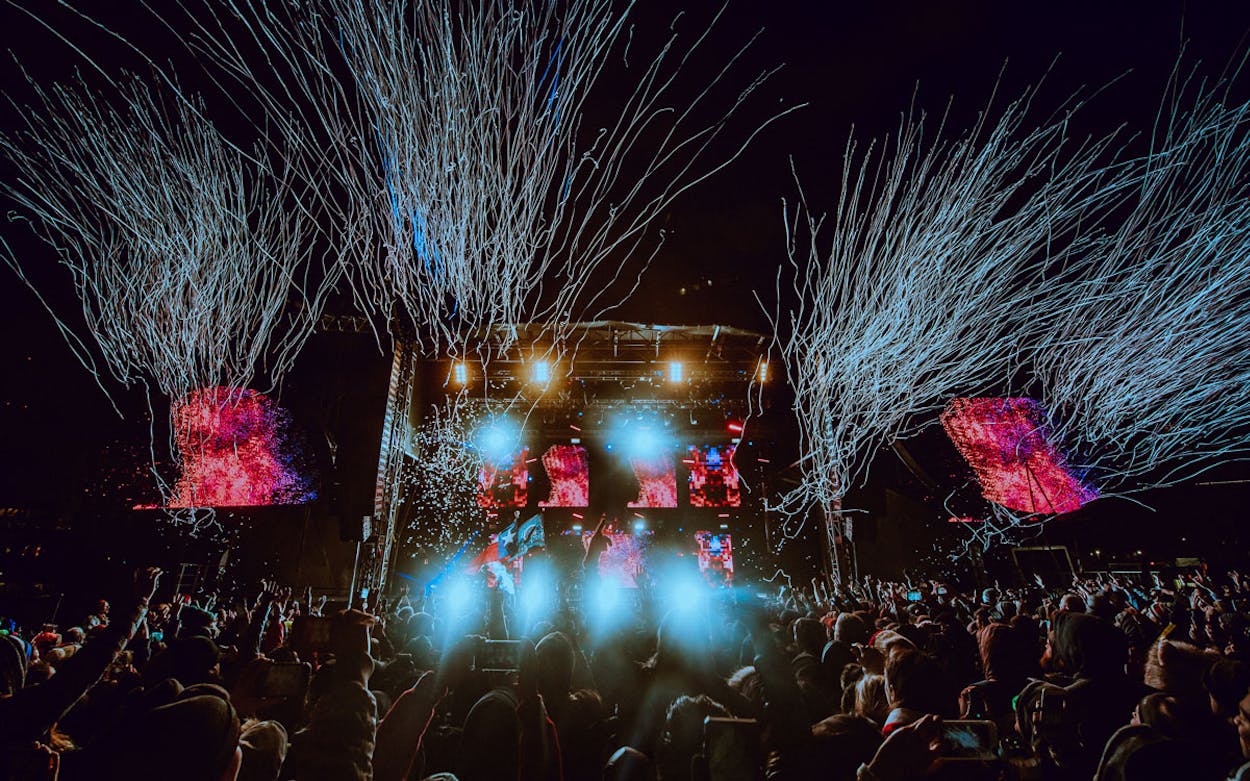Texas’s hottest new music festival may also be its most woman-centric. Day for Night, the Houston-based multimedia festival now entering its third year, announced its lineup last week. Among the headliners are Texas musicians Solange and St. Vincent, who took their place at the top of the bill next to Nine Inch Nails and Thom Yorke.
The festival, which will run from December 15 to 17, will kick off with a new element—a summit about “the intersection of art, technology, and activism” featuring talks by LBGTQ activist Chelsea Manning, performer Laurie Anderson, activist and singer Nadya Toloknnikova of Pussy Riot, and artist/programmer Lauren McCarthy.
Festival founder Omar Afra takes pride in the number of female headliners and speakers featured this year, saying it was the result of a conscious decision to diversify the traditional music festival lineup. “The overwhelming majority of agents and managers are white men, but if you look at the biggest record- and ticket-selling artists in the world, who is it? Lady Gaga, Katy Perry, Beyoncé, Taylor Swift. People want more female voices,” Afra says. “I don’t know that the world needs more white dudes singing that their girl’s sex is on fire. That is not where the planet is right now.”
Day for Night was founded in Houston in 2015 by some of the same people behind Free Press Summer Fest, the Bayou City’s version of the Austin City Limits Festival. Rather than being a winter version of Free Press, though, Day for Night’s goal from the beginning was to push the boundaries of the music festival by incorporating experimental, immersive art installations.
“Day for Night was largely born out of frustration at all the things I couldn’t do at FPSF, all the things where our partners were like, nah, we’re not willing to try that,” recalls Afra, who is also the publisher of alternative newspaper Free Press Houston.
Afra had grown frustrated will the staleness of conventional, “big box” music festivals that seemed to feature the same artists and same format year after year. “The festival model hasn’t really changed much since Woodstock,” he says. “You take a stage, you put it in an empty field, and you sell light beer, right? Despite all the new technology we have now, the festival hasn’t really changed.”
Day for Night’s inaugural festival was staged in a six-block area around Houston’s Silver Street Studios and featured performances by the Philip Glass Ensemble alongside more traditional names like Kendrick Lamar and Janelle Monáe. It also featured light installations by a half dozen or so artists from around the world. Last year’s festival was held at an abandoned downtown post office and was headlined by Björk (performing as a DJ rather than a singer), Aphex Twin, and The Jesus and Mary Chain. Despite the chilly weather, it attracted about 25,000 people per day over its weekend run, two-thirds of whom came from outside of Houston.
Afra described the newly added summit as part of a five-year plan to expand Day for Night across more days and more locations around Houston, as well as to include more political and cultural discussion. “You can be inspired at the event, you can party at the event, you can learn at the event,” he says. “We just see so much potential for using the city.”
But he resists the comparison to the sprawling South by Southwest, preferring to model the festival on multimedia spectacles like Sónar Barcelona or the Manchester International Festival. “I love SXSW, and it does so many great things, but we’re looking for a more condensed scene. SXSW is everything to everybody, and that’s not us. Day for Night might not be the place to see famous chefs do an activation.”








